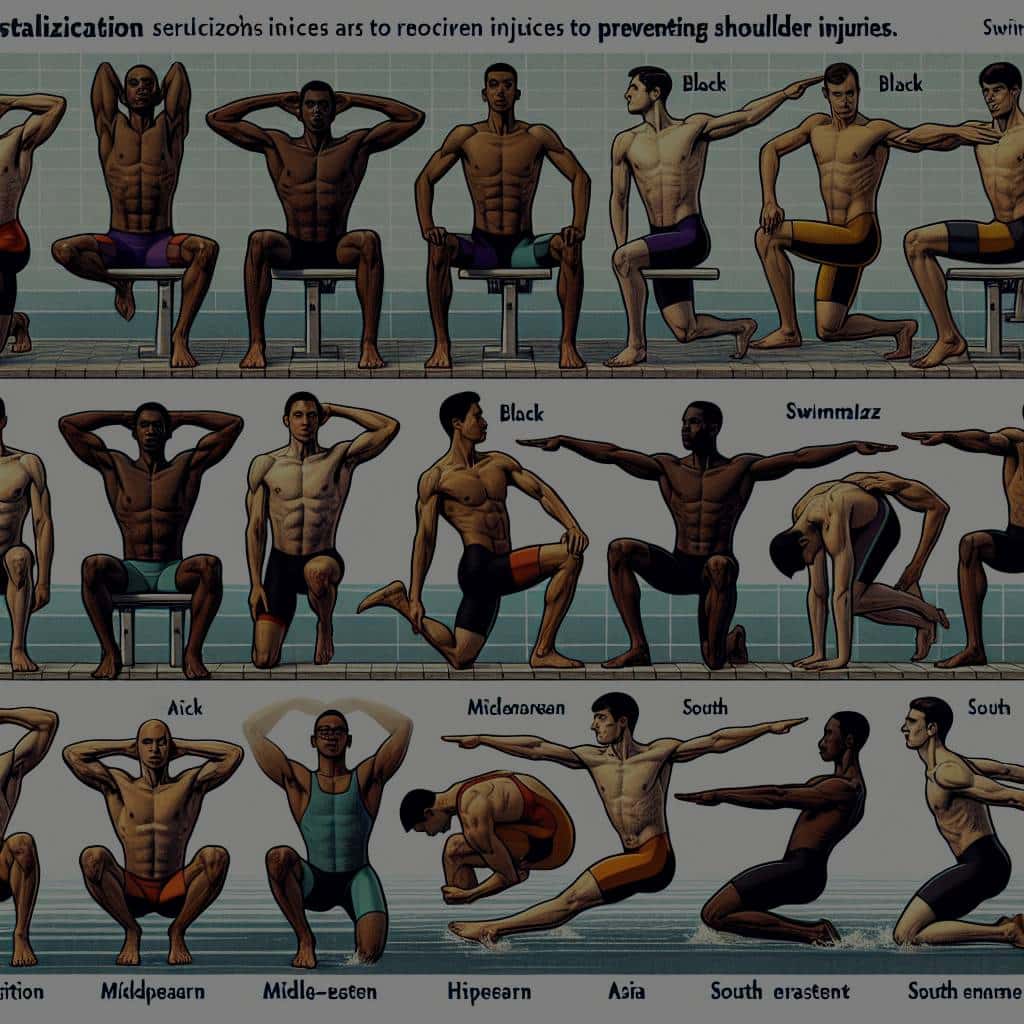Swimming is a fantastic sport that engages numerous muscle groups, providing an excellent full-body workout. However, like any other sport, it may also lead to injuries, particularly in the shoulder area. As scholars and sports medicine professionals have noted, shoulder pain is a common issue among swimmers. This predicament often stems from the substantial demand placed on the shoulder muscles during swimming. This article explores the crucial role of stabilization exercises in preventing these injuries and maintaining strength and endurance in swimmers.
Understanding the Shoulder’s Role in Swimming
Before we delve into the significance of stabilization exercises, let’s first comprehend the role shoulders play in swimming. Swimmers repeatedly use their shoulder muscles to propel themselves through the water. According to a study referenced on Google Scholar, the shoulder is the most frequently injured area in swimmers, with the rotator cuff being the primary site of injury.
Also to discover : How Can Technology Be Used to Track and Improve Recovery in Baseball Pitchers?
The rotator cuff, a group of four muscles located around the shoulder joint, plays an integral role in the swimming motion. These muscles work together to allow the full range of rotation and stability necessary for the rigorous movements of swimming. However, the constant strain placed on the rotator cuff can result in injuries, specifically inflammation and tears, leading to pain and limited mobility.
The Importance of Scapular Position in Swimmers
Scapular position is another crucial aspect of shoulder health in swimmers. The scapula, or shoulder blade, plays a pivotal role in providing stability and strength to the shoulder joint. An article on Pubmed highlights that abnormal scapular position and movement can further increase the risk of shoulder injuries in swimmers.
Topic to read : What Are the Latest Techniques in Speed Skating for Maximizing Cornering Speed?
A well-aligned scapula allows for optimal muscle engagement, leading to more forceful and efficient swimming strokes. Conversely, a misaligned scapula may result in an imbalance of the muscles around the shoulder joint, exacerbating the risk of rotator cuff injuries. Therefore, maintaining proper scapular alignment is essential for preventing shoulder injuries in swimmers.
Incorporating Shoulder Stabilization Exercises
Just as swimmers meticulously refine their swimming techniques, they should also incorporate shoulder stabilization exercises into their training routines. These exercises help to strengthen the rotator cuff and scapular muscles, improving shoulder stability and reducing the risk of injury.
There are several effective exercises swimmers can incorporate into their regimen to enhance shoulder stability. These include internal and external rotation exercises, scapular retraction exercises, and strengthening exercises for the muscles surrounding the shoulder joint. These exercises enhance the strength and endurance of the shoulder muscles, enabling swimmers to withstand the rigors of their sport without succumbing to shoulder pain or injury.
The Role of Strength Training in Shoulder Injury Prevention
Strength training plays a crucial role in preventing shoulder injuries in swimmers. A well-rounded strength training program enhances the strength and endurance of the shoulder muscles, providing the stability necessary to withstand the rigorous demands of swimming.
Strength training exercises, particularly those targeting the rotator cuff and scapular muscles, can help to correct muscle imbalances that may contribute to shoulder pain and injury. By enhancing muscle strength and endurance, strength training can enable swimmers to swim faster and for longer periods, all while reducing their risk of shoulder injury.
The Evidence: Scholarly Research on Shoulder Stabilization Exercises
Several scholarly studies have investigated the impact of shoulder stabilization exercises on injury prevention in swimmers. A comprehensive review of the literature available on Google Scholar reveals that incorporating these exercises into a swimmer’s training routine can significantly reduce the risk of shoulder injuries.
For instance, a study published on Pubmed found that swimmers who regularly performed shoulder stabilization exercises were less likely to experience shoulder pain and injury compared to those who did not. Furthermore, these swimmers displayed improved shoulder muscle strength and endurance, underscoring the crucial role of stabilization exercises in a swimmer’s training routine.
In summary, shoulder stabilization exercises play a critical role in preventing shoulder injuries in swimmers. Incorporating these exercises into a swimmer’s training routine can significantly boost shoulder muscle strength and endurance, reduce the risk of injury, and enhance overall performance. Whether you’re an amateur swimmer or a seasoned professional, integrating shoulder stabilization exercises into your training could significantly enhance your swimming performance and longevity in the sport.
The Synergy of Dry Land and Water Exercises for Shoulder Injury Prevention
While swimming is an excellent sport that works the entire body, swimmers can further enhance their shoulder strength and stability by incorporating dry land exercises into their training plan. These exercises, often utilized in physical therapy, can be particularly beneficial in boosting shoulder health and preventing injuries.
Dry land exercises are performed out of the water and typically focus on improving strength, flexibility, and overall physical conditioning. For swimmers, these exercises can target the rotator cuff and shoulder blades, promoting enhanced muscle strength and endurance.
External rotation and internal rotation exercises are some of the most effective dry land exercises for strengthening the rotator cuff. These exercises can be performed with resistance bands or dumbbells, making them accessible and convenient for most swimmers.
Moreover, swimmers can perform scapular stabilizers exercises to improve the alignment and stability of their shoulder blades. These exercises contribute to proper scapular movement and position, reducing the risk of shoulder pain and injury.
Dry land exercises, when combined with in-water exercises, can provide a holistic approach to shoulder injury prevention. By working both in and out of the water, swimmers can optimize their training, ensuring they are well-prepared to meet the demands of their sport.
Conclusion: The Essential Role of Stabilization Exercises in Swimming
Shoulder injuries can be a significant setback for competitive swimmers, affecting their performance and potentially leading to long-term damage. Given the high prevalence of shoulder issues amongst swimmers, as reported in various sports med articles and studies on Google Scholar, the importance of injury prevention cannot be overstated.
Stabilization exercises, both in and out of the water, play a crucial role in this preventative strategy. These exercises strengthen the key muscles involved in swimming, particularly the rotator cuff and scapular stabilizers. By enhancing the strength of these muscles, swimmers can improve their shoulder stability, helping to prevent common injuries such as swimmer’s shoulder.
Moreover, the benefits of these exercises extend beyond injury prevention. Research on Pubmed Google shows that swimmers who consistently perform stabilization exercises also reap performance benefits, swimming faster and for longer periods.
However, maintaining proper form during these exercises is vital. Misalignment can exacerbate the risk of injuries. Therefore, swimmers should consider working with a knowledgeable coach or physical therapist to ensure they are performing these exercises correctly.
As we open a separate window to the future of swimming training, it is clear that shoulder stabilization exercises will continue to play a crucial role. By incorporating these exercises into their training routines, swimmers can protect their shoulder health, enhance their performance, and enjoy a long and successful career in the sport.






